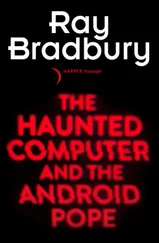Within three years of the day he met his soon-to-be partners, Gebelli went from undergraduate to superstar programmer to the owner of his own software company to obscurity. Sirius Software quickly grew from a small business to a position at the head of the Apple entertainment software market in the early 1980s. But I believe Jewell and Bradley, like Gebelli, made a series of errors that turned out to be fatal when the software market turned from a gold rush to a more normal competitive business: They never diversified beyond their original inventory of strictly entertainment software; because of their need to expand, they put out some software of inferior quality; they jumped into the Atari VCS market at exactly the wrong time; and they committed themselves to the wrong machines and wrong distribution channels.
All they knew at the beginning was that Gebelli seemed pretty sure of himself. When Bradley first saw Gebelli’s program, he said it was “okay” and asked to keep the diskette for a day or two. Nasir came back three days later and said, with characteristic immodesty, “what do you think of it now? ” knowing undoubtedly that if they knew anything about Apple software they were bound to be impressed. Jewell offered to help turn Gebelli’s utilities into a package they could sell to the nonprogrammers who were buying Apples by the thousands. E-Z Draw was their first program.
Bradley and Jewell didn’t have to wait very long for their one-man program factory to come up with a successor. It was a home computer game that had the same kind of high-resolution, flicker-free animation that only the hugely popular arcade games had heretofore been able to offer to the video game industry’s huge, audiovisually sophisticated market of thirteen-year-olds with quarters in their pockets.
In 1980 and 1981, the whole world was paying puzzled and envious attention to the sudden, strange, and lucrative mushrooming of the video game industry. What was the power of this entrancing new technology out of Silicon Valley and Japan that was shaking so much wealth from the world’s all-but-zombified youth? The financial giants turned their eyes toward this promising new expansion of the consumer electronic market. But software wizards of the microcomputer realm knew that with the introduction of more sophisticated microcircuitry into inexpensive computers equipped with high-speed disk drives, rather than with the slower cassettes, the future lay in bringing high-performance graphics to the personal computer market.
The home software industry evolved from the perceptually hypnotic, apparently addictive, unbelievably lucrative video arcade games like Pong (the grandaddy), Space Invaders (the original “shoot-'em-up”), Galaxians, and Pac-Man, the most successful of all. For a period lasting a little less than three years, video addicts from Tokyo to Peoria fed enough quarters (or 100-yen pieces) into the arcade versions to add up to several billions of dollars annually. Pac-Man alone brought in more than a billion dollars in its first year. The successful transfer of even a fraction of this new source of wealth from the video game market to home computer versions would be a tremendous boost to the infant microcomputer industry.
But bringing arcade-style graphics to 1980-era microcomputer screens was no mean feat. The trick lay in the software. How could a programmer use the limited visual-display capabilities of the relatively small-memory Apple to duplicate the effects that were accomplished in arcade games by big screens and special microchips dedicated strictly to graphics functions? Enter Nasir Gebelli and his new-found representatives.
With Both Barrels, Cyber Strike, Star Cruiser, and other fast-action, high-resolution computer games, Gebelli started to build his reputation as one of the fastest, most graphically sophisticated programmers in the world. To a microcomputing audience that had grown from a few dozen technically sophisticated hobbyists to thousands of people—many of whom knew very little about computing before they met their first arcade game—the fact that computers could be used to create visual effects was very important. The early hackers of the 1960s might have reveled in technical complexities of how the computer worked, but the microcomputer generation of the 1980s wanted to experience something, to see something that could compare to 70-millimeter Technicolor movies and optically dazzling video games. Gebelli’s shoot-’em-ups were colorful, animated, not terribly imaginative after a while, but wildly successful while the winning streak lasted.
As a measure of how astonishingly successful Nasir was, keep in mind that most programmers took anywhere from six months to two years to program a video game. Nasir finished nine in the space of a single year, and all of them made it onto Softalk’s Top Thirty chart. He was innovative and bold, but compared with some who came after him, he wasn’t the world’s most elegant programmer. He did find ways to create programs fast, however, and in the hot market of 1980 and 1981, that was a real advantage.
Bradley and Jewell weren’t afraid of innovation, either. They took the software world by storm. Back when Broderbund’s total annual sales were around $100,000, Sirius sold a million dollars’ worth of software to Apple. Then the company went on, long before most of us could afford such stuff, to put its software into really slick packaging. Sirius bought eight pages of advertising in Softalk. Nasir was turning out a program every six weeks, and every one was a smash hit. The programming was quick and dirty, and the material rewards came thick and fast. Nasir bought a very fancy sports car, bought a beautiful house with all the accoutrements, and married a beautiful blonde.
But Nasir wasn’t happy with the structure of Sirius—he felt that he as one of the three people who started the company, deserved some equity. Sirius was developing a stable of young programmers, based on the profits provided by Gebelli’s programming blitzkrieg of 1980-81. By 1982, feeling that he was entitled to something more than a royalty arrangement, Gebelli and Phil Knopp, general manager at Sirius, left to start Gebelli Software. They moved into relatively luxurious offices with beautiful furniture, a state-of-the-art photocopying machine, and a former quick-and-dirty programming hotshot who was now a full-time businessman and no longer had time to program. Nasir was always thinking big. But the industry was changing, and a dazzling new generation of software hotshots had appeared from nowhere, just as he had walked into that computer store not so long before. Broderbund’s importation of Japanese products, for example, created some stiff competition; Tony Suzuki’s Alien Rain ruined the sales of Gebelli’s Star Cruiser.
Gebelli Software sputtered and died within a year of its founding. One of the mixed blessings associated with setting up your own business is that there is no longer anyone to tell you whether your behavior is proper or improper. Although this liberation from the constraints of ordinary workaday life is emotionally very satisfying, it can permit one to drift away from conventionally acceptable behavior. A venture investor told me that she once set up an appointment to visit Gebelli Software at 8:30 one morning. She was there on time, but the company’s doors were locked. The first employees didn’t show up until 9:30, and the principals of the company weren’t there until 10:00.
Never mind that they had probably worked late into the night, or that this was their ordinary way of doing business. The investor was not impressed and predicted that few others in the “real world” would be eager to work with a company that kept such nonstandard hours. I couldn’t help but think back to Brøderbund’s bucolic early months and our two-hour afternoon basketball games. But we had given that up long before we started making appointments with venture capitalists. When the world of software hobbyists became the software industry, however, some people were unwilling to abandon their unconventional lifestyles simply because the conventional business world expected it. A few of those companies succeeded despite their principals’ nonconformity; many did not.
Читать дальше










